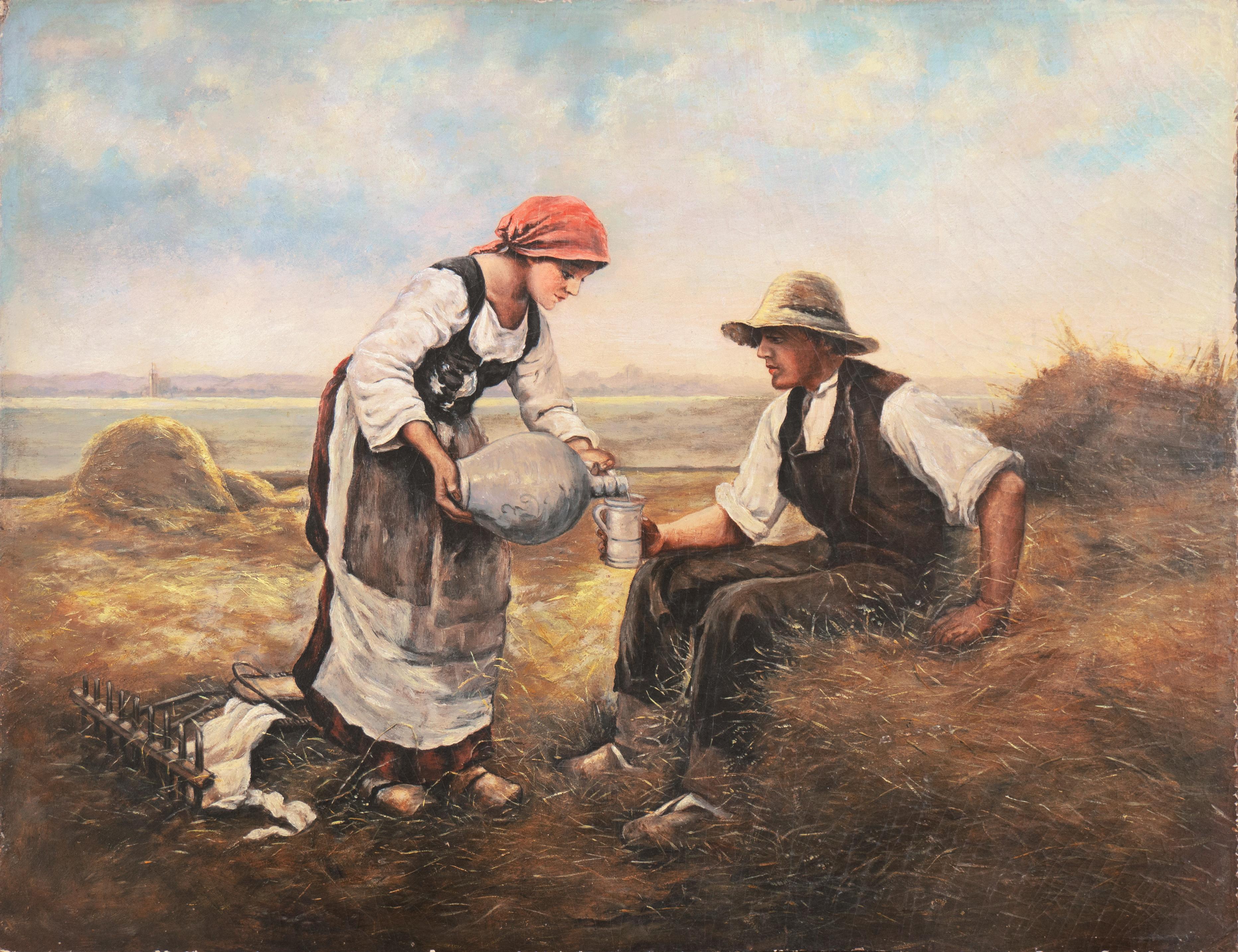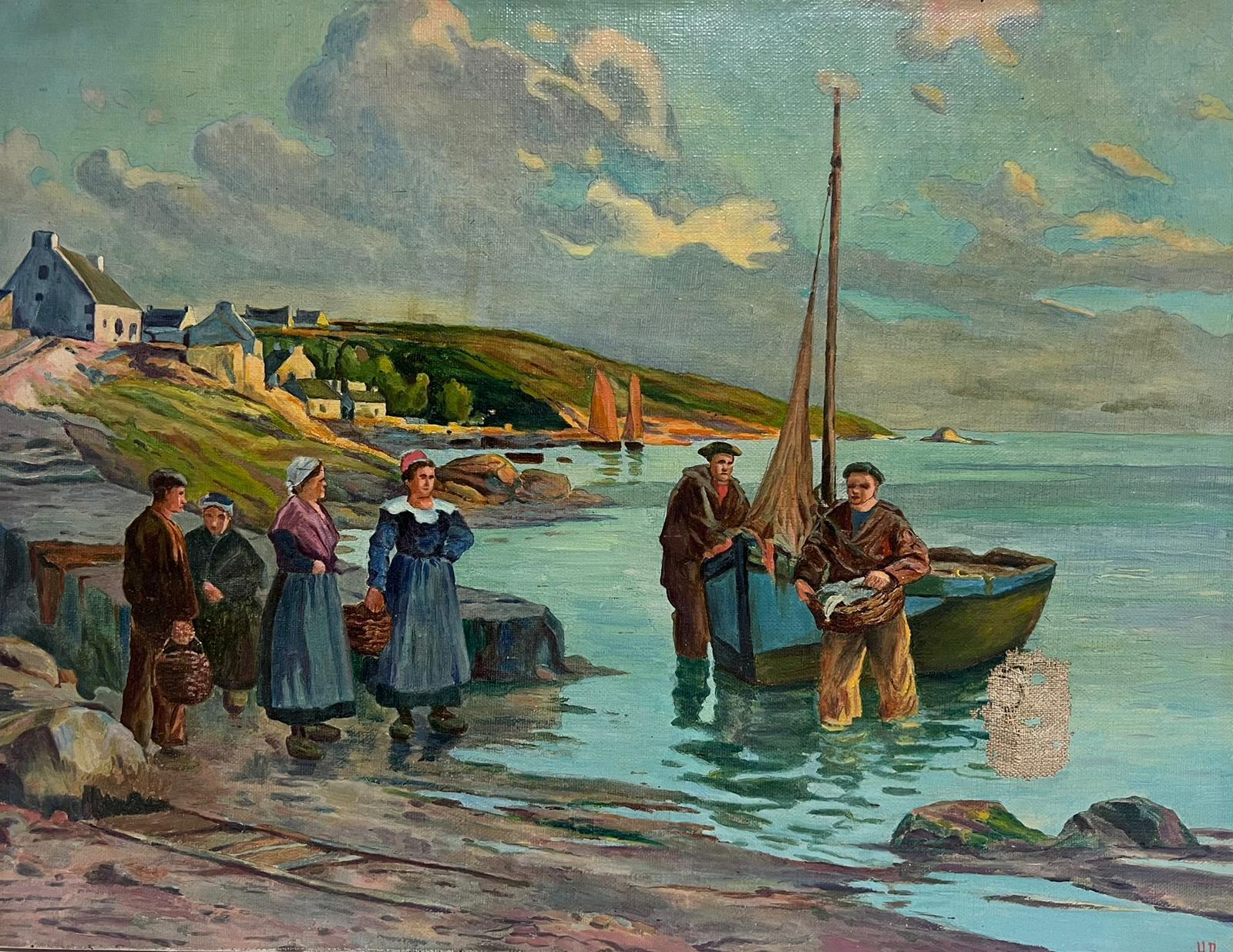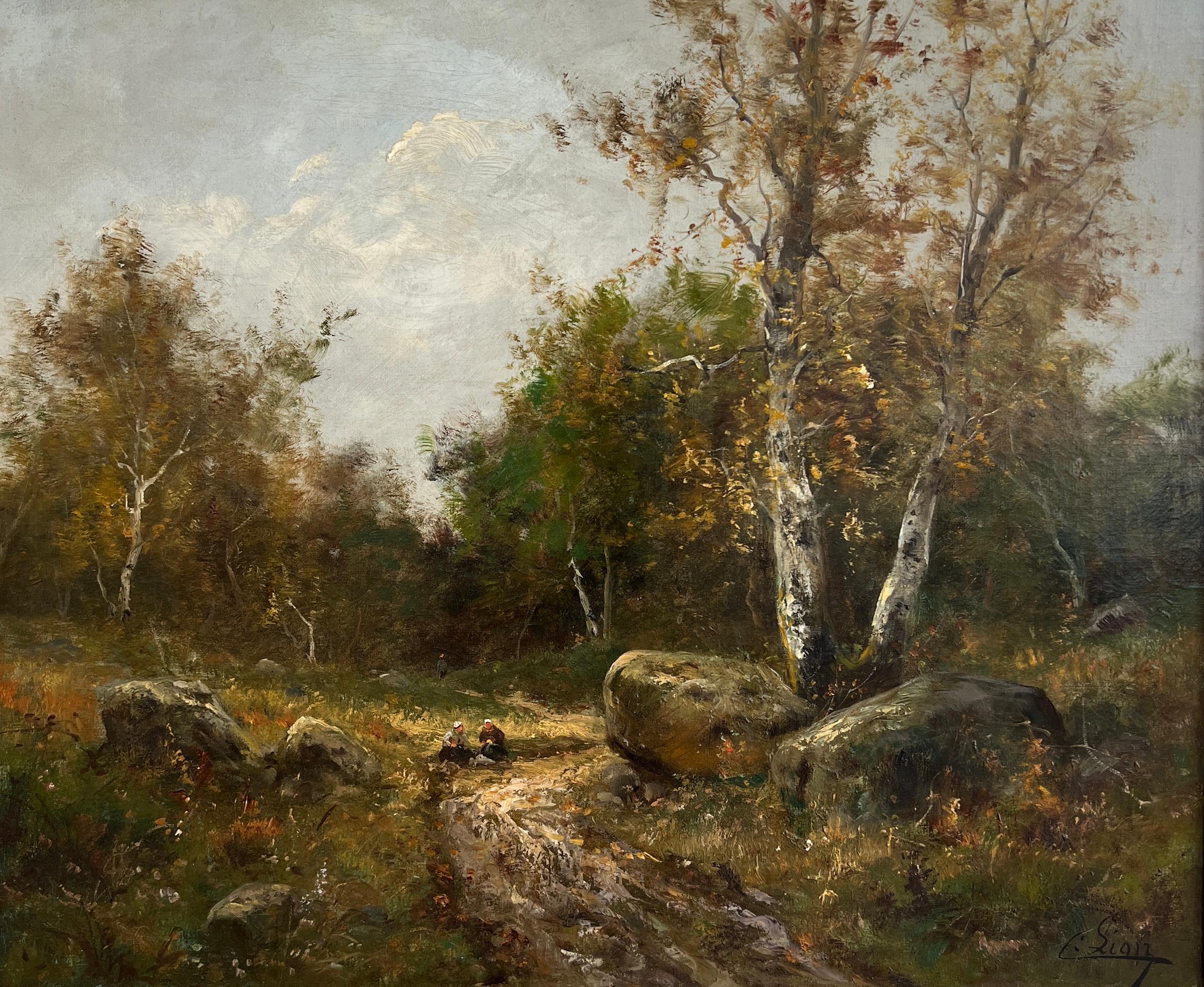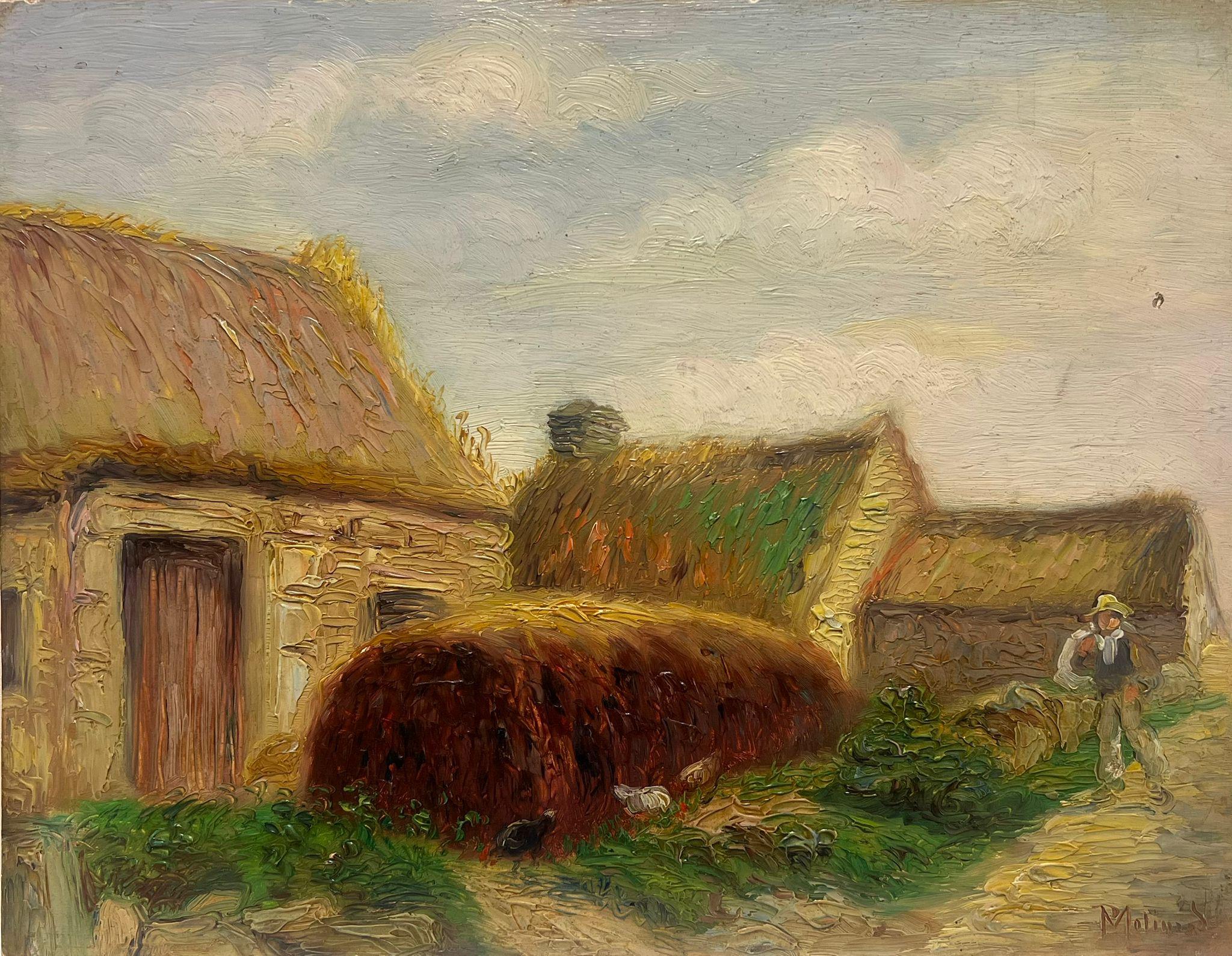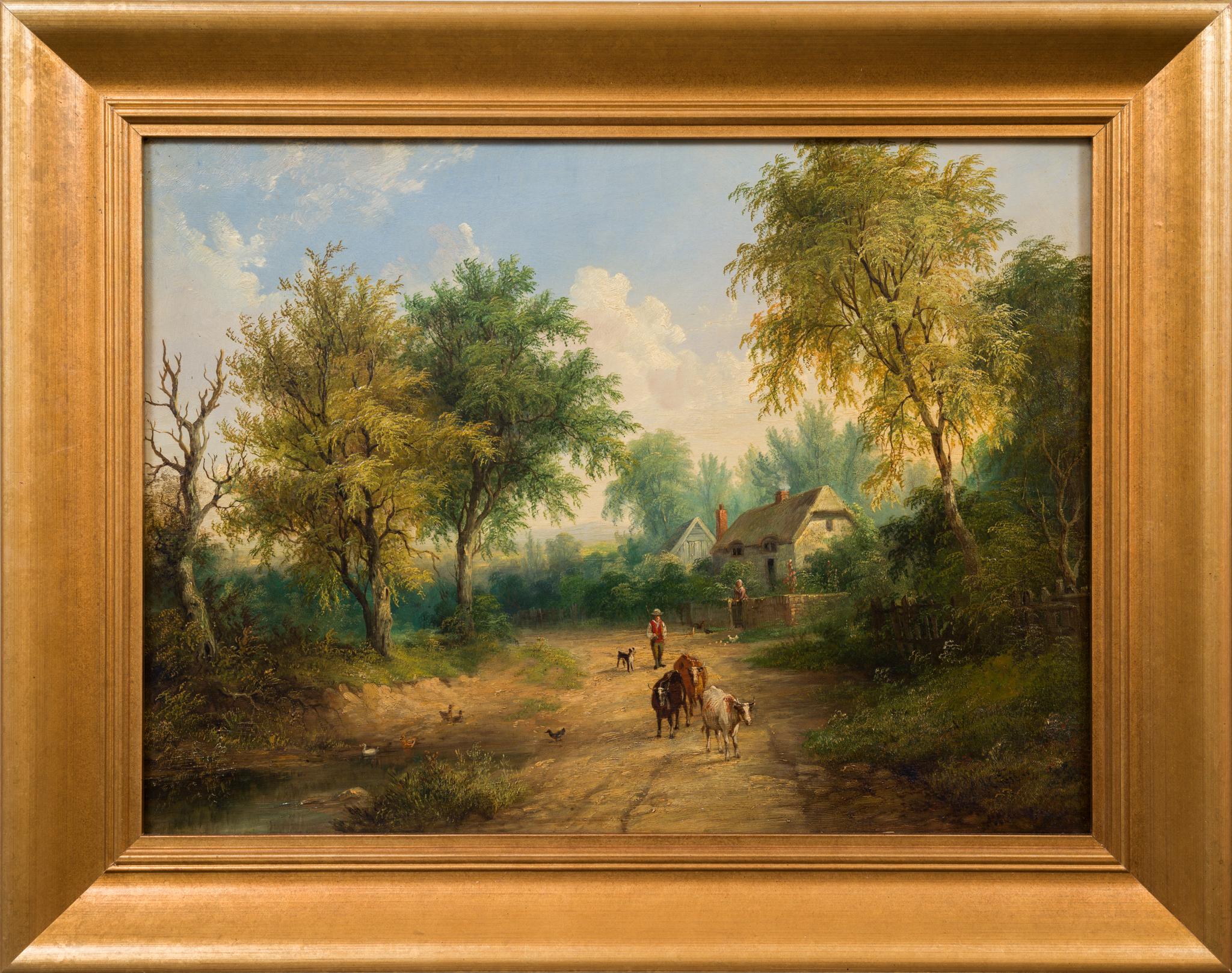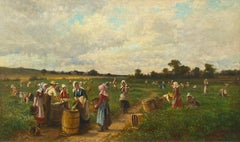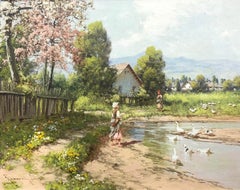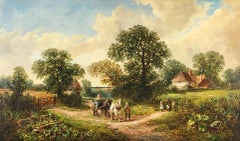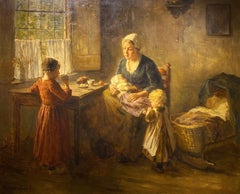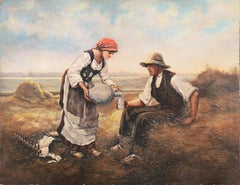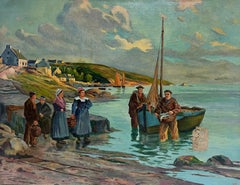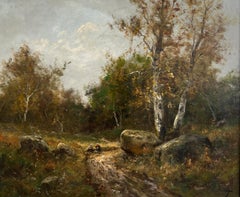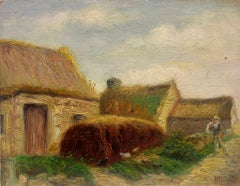Items Similar to Breton Chores
Want more images or videos?
Request additional images or videos from the seller
1 of 10
Clement SwiftBreton Chores1870
1870
Price Upon Request
Price Upon Request
Price Upon Request
Price Upon Request
Price Upon Request
Price Upon Request
Price Upon Request
Price Upon Request
Price Upon Request
Price Upon Request
About the Item
Clement Nye Swift
"Breton Chores" 1870
Oil on Canvas
Signed and Dated Lower Right
Canvas Size: approx 27 x18 inches
Framed Size: approx 34 x 35 inches
Provenance: Private Midwestern Collection
Clement Nye Swift was born in the town of Acushnet, Massachusetts and lived their his entire life, dying there in 1918.
He first aspired to be an animal painter, and traveled abroad to study the style of French painters. His work met with critical acclaim, and he exhibited in the famous Paris Salon from 1872-1881.
He also wrote poetry -- in particular, verses which were published in the New Bedford Standard on August 27, 1916, featuring "The Ship that Never Will Sail" in praise of the building of the Lagoda ship model at the Whaling Museum.
- Creator:Clement Swift (1846 - 1918)
- Creation Year:1870
- Dimensions:Height: 34 in (86.36 cm)Width: 25 in (63.5 cm)Depth: 2 in (5.08 cm)
- Medium:
- Movement & Style:
- Period:
- Condition:Has been relined but in good condition.
- Gallery Location:Missouri, MO
- Reference Number:1stDibs: LU74735131791
About the Seller
5.0
Vetted Professional Seller
Every seller passes strict standards for authenticity and reliability
Established in 1970
1stDibs seller since 2017
155 sales on 1stDibs
Typical response time: 1 to 2 days
- ShippingRetrieving quote...Shipping from: Missouri, MO
- Return Policy
Authenticity Guarantee
In the unlikely event there’s an issue with an item’s authenticity, contact us within 1 year for a full refund. DetailsMoney-Back Guarantee
If your item is not as described, is damaged in transit, or does not arrive, contact us within 7 days for a full refund. Details24-Hour Cancellation
You have a 24-hour grace period in which to reconsider your purchase, with no questions asked.Vetted Professional Sellers
Our world-class sellers must adhere to strict standards for service and quality, maintaining the integrity of our listings.Price-Match Guarantee
If you find that a seller listed the same item for a lower price elsewhere, we’ll match it.Trusted Global Delivery
Our best-in-class carrier network provides specialized shipping options worldwide, including custom delivery.More From This Seller
View AllBean Picking, New Jersey, 1890
By Frederick Rondel
Located in Missouri, MO
Bean Picking, New Jersey, 1890
By. Frederick Rondel (1826-1892)
Signed Lower Right
Unframed: 21.5" x 35.5"
Framed: 32" x 46"
Frederick Rondel, born in Paris in 1826, came to America...
Category
19th Century French School Landscape Paintings
Materials
Canvas, Oil
Price Upon Request
Tending the Flock
By Laszlo Neogrady
Located in Missouri, MO
Laszlo Neogrady (1896-1962)
"Tending the Flock" c. 1930
Oil on Canvas
approx 24 x 30
approx 30 x 36 framed
Laszlo Neogrady was born in Budapest, Hungary in 1896. He was the son of...
Category
Early 20th Century Land Landscape Paintings
Materials
Canvas, Oil
Price Upon Request
The Haywagon
By James Edwin Meadows
Located in Missouri, MO
James Edwin Meadows (British 1828-1888)
"The Haywagon" 1866
Oil on Canvas
Site: 24 x 40 inches
Framed: 30 x 46 inches approx.
A London landscape painter, James Edwin Meadows was the...
Category
Late 19th Century Land Landscape Paintings
Materials
Canvas, Oil
Price Upon Request
Mother and Children
By Bernard De Hoog
Located in Missouri, MO
Bernard DeHoog (1867-1943)
"Mother and Children"
Oil on Canvas
Signed Lower Left
Site Size: approx. 32.5 x 39.5 inches
Framed Size: approx. 39 x ...
Category
Late 19th Century Realist Figurative Paintings
Materials
Canvas, Oil
Price Upon Request
A Day in June, Scene Eastchest, New York
By Edward B. Gay
Located in Missouri, MO
A Day in June, Scene Eastchest, New York
Edward Gay (Irish, American, 1837-1928)
Oil on Canvas
Complimented by original frame in great condition
Signed and Dated Lower Right
Titled a...
Category
1890s Hudson River School Landscape Paintings
Materials
Canvas, Oil
Price Upon Request
Sundown
By Robert Robin Fenson
Located in Missouri, MO
Robert Robin Fenson (Active 1889-1914, British)
"Sundown"
Oil on Canvas
16 x 23.5 (site)
19 x 27 (framed)
Category
Late 19th Century Land Landscape Paintings
Materials
Canvas, Oil
Price Upon Request
You May Also Like
'The Midday Rest', Breton Figural Harvest Scene oil, Brittany Landscape
Located in Santa Cruz, CA
Late 19th century French School, unsigned and painted circa 1860. Oil on artist prepared panel.
A late 19th century oil landscape, painted in the style of Jean-François Millet, show...
Category
1850s French School Figurative Paintings
Materials
Oil, Board
Antique Breton Fishing Scene French Oil Painting on Canvas Fishermen & Women
Located in Cirencester, Gloucestershire
Breton Fisherfolk on the Shore
French School, early 1900's
signed with initials HB
oil on canvas, unframed
canvas: 15.5 x 20 inches
provenance: private collection, France
condition: ...
Category
Early 20th Century Victorian Figurative Paintings
Materials
Oil, Canvas
Washerwomen at the river
Located in Genève, GE
Work on canvas
Golden wooden frame
68 x 79.5 x 5.5 cm
Category
Early 20th Century Landscape Paintings
Materials
Oil
Life in a Rustic Village Antique French Impressionist Oil Painting
Located in Cirencester, Gloucestershire
Rustic Village
Paul Molinard 19/ 20th Century French Artist
signed oil on panel, unframed
board : 10.5 x 14.5 inches
Inscribed verso
Provenance: private collection, France
Condition...
Category
Early 20th Century Impressionist Landscape Paintings
Materials
Oil
The Daily Tasks of Rural Life, c. 1860, Romanticism Oil Painting.
Located in Stockholm, SE
This serene landscape painting is by James Howe Carse, a Scottish-Australian artist whose lineage and mentorship are deeply rooted in the artistic traditions of his time. Carse's wor...
Category
Mid-19th Century Romantic Figurative Paintings
Materials
Canvas, Oil
Washerwomen at the river
Located in Genève, GE
Work on canvas
Golden wooden frame
68 x 79.5 x 5.5 cm
Category
Early 20th Century Landscape Paintings
Materials
Oil
